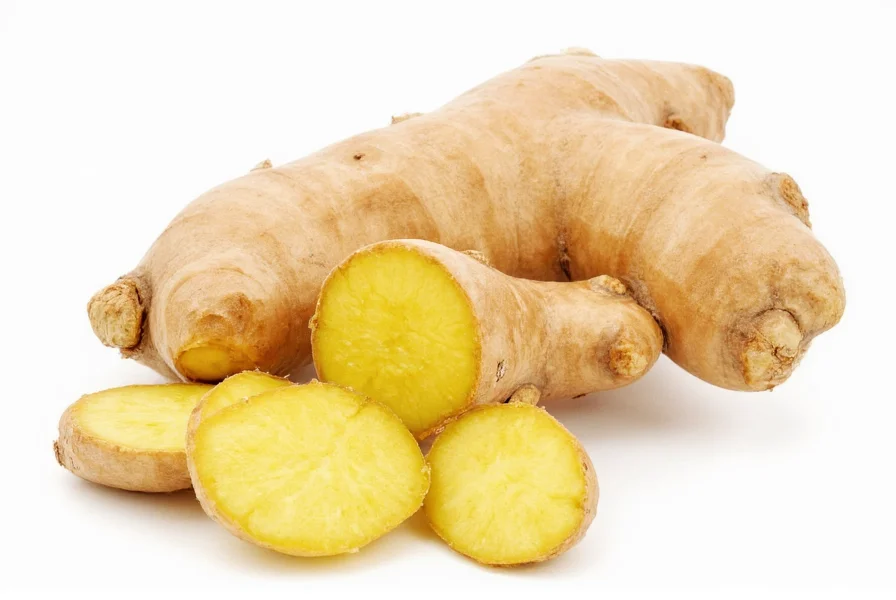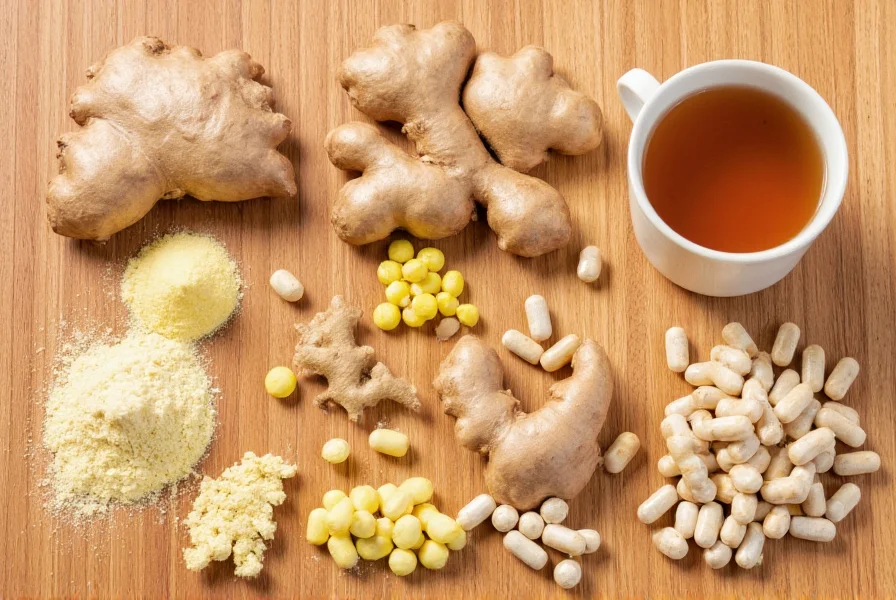Ginger has been used for centuries in traditional medicine systems across Asia and the Middle East. Modern research continues to validate many of these traditional uses while uncovering new potential health applications. This versatile root contains over 400 distinct compounds, with gingerol being the most biologically active component responsible for many of ginger's therapeutic effects.
Scientifically Supported Health Benefits of Ginger
Multiple clinical studies have demonstrated ginger's effectiveness for various health concerns. Unlike many herbal remedies with limited research, ginger benefits are supported by substantial scientific evidence across multiple domains of health.
Nausea and Digestive Relief
One of ginger's most well-documented advantages is its ability to alleviate nausea. Research shows ginger can effectively reduce:
- Morning sickness during pregnancy (with physician approval)
- Post-operative nausea
- Chemotherapy-induced nausea
- Motion sickness
A comprehensive review published in Nutrition Reviews analyzed 12 clinical trials and concluded that ginger significantly reduces nausea severity compared to placebo. The mechanism appears to involve ginger's ability to accelerate gastric emptying and modulate serotonin receptors in the digestive tract.
| Health Benefit | Research Status | Recommended Form | Effective Dosage |
|---|---|---|---|
| Nausea relief | Strong evidence | Fresh, dried, or supplement | 1-1.5g daily |
| Anti-inflammatory effects | Good evidence | Fresh or extract | 2g daily |
| Muscle pain reduction | Moderate evidence | Fresh or oil | 2g daily |
| Blood sugar regulation | Preliminary evidence | Extract | 1.6-3g daily |
Anti-Inflammatory and Pain Reduction Properties
Ginger's anti-inflammatory effects make it valuable for managing various types of pain. Studies indicate ginger may help reduce:
- Osteoarthritis pain, particularly in the knee
- Menstrual pain (dysmenorrhea)
- Exercise-induced muscle soreness
Research published in the Journal of Medicinal Food found that participants who consumed 2 grams of ginger daily experienced 25% less muscle pain after exercise compared to the placebo group. The anti-inflammatory mechanism works by inhibiting the production of inflammatory cytokines and prostaglandins.

Cardiovascular Health Support
Emerging research suggests ginger may offer cardiovascular benefits. Several studies have shown ginger can help:
- Lower LDL ("bad") cholesterol levels
- Reduce blood pressure
- Decrease markers of oxidative stress
A 2020 study in the Journal of Cardiovascular Pharmacology demonstrated that ginger supplementation significantly reduced total cholesterol and triglyceride levels in participants with hyperlipidemia. While more research is needed, these findings suggest ginger could be a valuable dietary component for heart health.
Immune System Support
Ginger's antioxidant properties contribute to immune system support. The root contains potent antioxidants that help combat oxidative stress and may enhance immune cell activity. Unlike synthetic supplements, ginger provides these benefits through natural compounds that work synergistically.
How to Incorporate Ginger Into Your Diet
Maximizing the health advantages of ginger root requires proper preparation and consumption methods:
Optimal Forms of Ginger
- Fresh ginger: Highest in active compounds, ideal for cooking and teas
- Dried ginger powder: Concentrated form, good for baking and supplements
- Ginger tea: Effective for nausea relief and digestion
- Ginger extract: Standardized doses for therapeutic applications
Daily Consumption Guidelines
For general health maintenance, most health organizations recommend:
- Up to 4 grams of ginger daily from all sources
- 1-3 grams for therapeutic benefits (divided doses)
- Consult a healthcare provider before exceeding 4 grams daily
Timing matters when consuming ginger for specific benefits. For nausea relief, consume 30 minutes before potential triggers. For digestive support, take with meals. For anti-inflammatory effects, consistent daily consumption yields best results.

Potential Side Effects and Precautions
While generally safe, ginger may cause:
- Mild heartburn or stomach upset in sensitive individuals
- Increased bleeding risk when combined with blood thinners
- Lowered blood sugar levels (caution for diabetics)
People with gallstones should consult a physician before consuming large amounts of ginger, as it may increase bile production. Pregnant women should limit consumption to 1 gram daily unless approved by their healthcare provider.
Conclusion: Realistic Expectations for Ginger Benefits
Ginger offers genuine health advantages supported by scientific research, but it's not a miracle cure. The health benefits of ginger work best as part of a comprehensive approach to wellness that includes a balanced diet, regular exercise, and appropriate medical care when needed. Understanding both the proven benefits and limitations of ginger helps consumers make informed decisions about incorporating this powerful root into their health regimen.
Frequently Asked Questions
What is the most effective way to consume ginger for nausea relief?
The most effective method for nausea relief is consuming 1-1.5 grams of fresh ginger or standardized extract about 30 minutes before potential nausea triggers. Ginger tea made from freshly grated root provides quick absorption, while crystallized ginger offers convenient portable relief. Research shows fresh ginger maintains higher concentrations of active compounds compared to processed forms.
How much ginger should I consume daily for anti-inflammatory benefits?
For anti-inflammatory effects, studies suggest consuming 1.5-2 grams of fresh ginger or equivalent extract daily. This amount has been shown to significantly reduce inflammatory markers without causing adverse effects in most people. Consistent daily consumption over several weeks yields better results than sporadic use, as ginger's compounds build up in the system gradually.
Can ginger interact with medications?
Yes, ginger may interact with certain medications. It can enhance the effects of blood thinners like warfarin, potentially increasing bleeding risk. Ginger may also lower blood sugar levels, which could amplify the effects of diabetes medications. Additionally, it might interact with medications for high blood pressure. Always consult your healthcare provider before using ginger therapeutically if you take prescription medications.
Is fresh ginger more beneficial than powdered ginger?
Fresh ginger generally contains higher levels of gingerol, the primary active compound. However, dried ginger powder has a higher concentration of shogaol, another beneficial compound formed during the drying process. Fresh ginger is better for immediate use in teas and cooking, while powdered ginger offers convenience and longer shelf life. For most health advantages of ginger root, both forms provide significant benefits when consumed in appropriate amounts.











 浙公网安备
33010002000092号
浙公网安备
33010002000092号 浙B2-20120091-4
浙B2-20120091-4